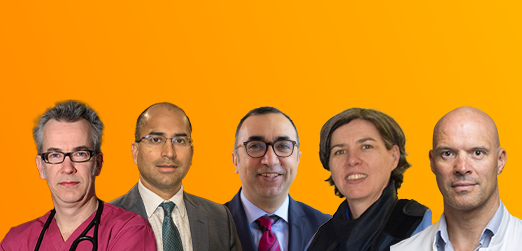- Home
- TIO 2021 Symposium – TAVI Haemodynamics and Outcomes: Are We Measuring Appropriately?
TIO 2021 Symposium – TAVI Haemodynamics and Outcomes: Are We Measuring Appropriately?
- Intervention
- Structural Heart Disease
Available Credit:
- 1.00
Course Published On:
Course Expiry Date:

Overview
Join leading faculty to evaluate the relationship between TAVI and clinical outcomes based on clinical data whilst also summarising how haemodynamic monitoring can be adopted post-TAVI. This satellite symposium was part of Transcatheter Interventions Online 2021, a world-class virtual event dedicated to transcatheter treatment strategies for coronary and structural heart disease.
Support Statement
This programme is supported by unrestricted educational grants from Edwards Lifesciences. The scientific programme has not been influenced in any way by the sponsors.
Disclosure
In compliance with EBAC / EACCME guidelines, all speakers/chairpersons participating in this programme have disclosed or indicated potential conflicts of interest which might cause a bias in the presentations.
The Organising Committee/Course Director is responsible for ensuring that all potential conflicts of interest relevant to the event are declared to the audience prior to the CME activities.
Terms & Conditions
Radcliffe Education requires contributors to our CME programmes to disclose any relevant financial relationships that have occurred within the past 12 months that could create a conflict of interest. These will be identified in the faculty section if applicable.
The session of ‘TAVI Haemodynamics and Outcomes: Are We Measuring Appropriately ’ is accredited by the European Board for Accreditation in Cardiology (EBAC) for 1 hour of external CME credits.
Each participant should claim only those hours of credit that have actually been spent in the educational activity. EBAC works according to the quality standards of the European Accreditation Council for Continuing Medical Education (EACCME), which is an institution of the European Union of Medical Specialists (UEMS).
Through an agreement between the European Board for Accreditation in Cardiology and the American Medical Association, physicians may convert EBAC External CME credits to AMA PRA Category 1 Credits™. Information on the process to convert EBAC credit to AMA credit can be found on the AMA website.
Instructions to Participants
There is no fee for taking part in this online learning activity.
Activities are designed to be completed within 60 minutes and must be completed by the registered user. Physicians should only claim credits for time spent on the activity. To successfully earn credit, participants must complete the activity in full in the indicated time frame.
To complete the course and claim certification participants must:
- Read the course outline information supplied and complete pre-test questions if supplied prior to starting the activity. Users must read and study the activity in its entirety before completing the post-test questions.
- Your results will be automatically saved and if a pass score is achieved (where applicable), you may be eligible to claim credit for the activity and receive a certificate of completion.
Target Audience
- Electrophysiologists
- Arrhythmologists
- General cardiologists
- Cardiac catheterization technologists and technicians
- Physiologists
- Device Implanting Specialist
Learning Objectives
Upon completion of this activity, participants will be able to:
- Describe how echo-based and catheter-based measurements differ when measuring haemodynamics post-TAVI
- Recall common factors impacting the accuracy of haemodynamic measurements and how they can be controlled
- Evaluate the relationship between TAVI and clinical outcomes based on clinical data
- Summarise how haemodynamic monitoring can be adopted post-TAVI
Module |
Title |
Duration |
Speakers |
|---|---|---|---|
| 1 | Introduction | Philippe Genereux (New Jersey, US) | |
| 2 | Echo vs catheter-based measurements post-TAVI | Philippe Pibarot (Quebec, Canada) | |
| 3 | TAVI haemodynamics and clinical outcomes | Philip MacCarthy (London UK) | |
| 4 | Optimising haemodynamic monitoring post-TAVI | David Wood (Vancouver, Canada) | |
| 5 | Q&A and Discussion | Philippe Genereux (New Jersey, US) Philippe Pibarot (Quebec, Canada) Philip MacCarthy (London UK) David Wood (Vancouver, Canada) | |
| 6 | Summary | Philippe Genereux (New Jersey, US) |
Q&A and Discussion
Duration:
Speakers: Philippe Genereux (New Jersey, US) Philippe Pibarot (Quebec, Canada) Philip MacCarthy (London UK) David Wood (Vancouver, Canada)
Chair
Panelist













